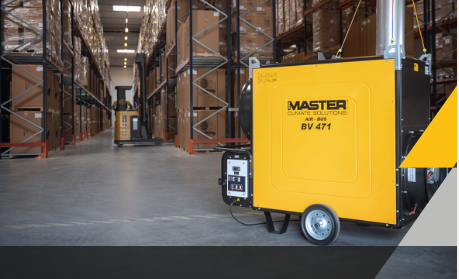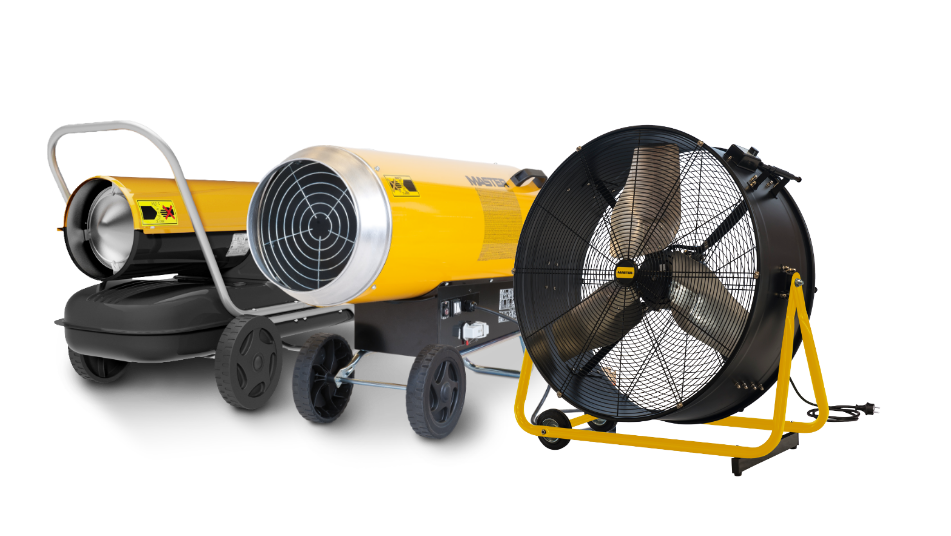In cold climates, or during the winter months throughout the Country, large warehouses are susceptible to significant drops in temperature. Without a well-considered heating system in place, keeping the building warm enough for employees can be both expensive and impractical.
Why is it so difficult to warm up warehouses?
There are a number of common climate control pitfalls in warehouse environments that can result in expensive energy bills and severe discomfort for staff working on the floors. In order to navigate around them, it is important to consider the following:
Floor-to-ceiling height
As warm air rises, heat that’s pumped into any spacious environment will rise to the ceiling, while cooler air remains below. In an average warehouse, the distance from floor to ceiling can exceed 10 metres, meaning that warmth has no chance of reaching those working at ground level.
Heat distribution
The installation requirements of many fixed heating solutions can create parameters that make it difficult to warm up every corner of a warehouse. In some cases, this means that energy is wasted on heating up empty parts of a building.
Day-to-day operation
During working hours, it’s likely that warehouse staff will have to open gates and doors relatively frequently. This unavoidable part of a facility’s operation allows heat to escape and cold air to infiltrate the building.
Poor insulation
In parts of a warehouse with insufficient insulation, or older buildings not made for modern working environments, heat loss is inevitable. This makes it even more important to find a solution that allows for a controlled flow of warm air to the areas where it is most important.
Warehouse usage
Warehouses that are part of production facilities often need heating in selected zones or for specific periods of time. For example, a factory that produces parts for final products such as boats, industrial machinery or furniture often has one production line or area for each part, each of them requiring different climate conditions.
What makes portable heating the obvious solution
The flexibility and cost-efficiency of high-quality portable heaters are a huge advantage to almost any large industrial space. Some more of the key benefits include:
Practicality
Moveable by design, portable heaters, such as the AIR-BUS range from Master, allow you to bring heat to specific areas that need it, without wasting energy warming areas that don’t. They also come with built-in forklifts slots to make moving units from one area to another quick and easy.
Suitability
Powerful units are available in a range of sizes and can be used as standalone heaters or implemented for simultaneous use depending on the requirements.
Flexibility
While portable units are purpose-built for temporary heating requirements, many top brands can be integrated with existing fixed systems. This is an effective way to boost efficiency in buildings that require a more permanent supply of heat.
To learn more about industry-leading solutions like the Master AIR-BUS BV 471 S and the AIR-BUS BV 691 S, or for more advice on climate control for warehouses and large industrial spaces, fill out the form below to get in touch with our team of experts.


